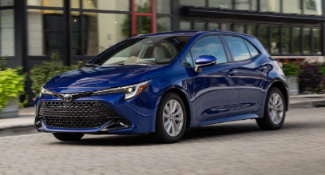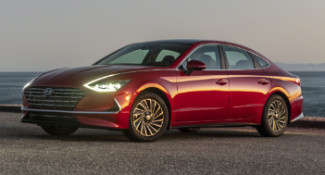Does cruise control save gas? It's been an accepted truth for some time that if you use cruise control on the freeway that you will get better fuel economy. The function of cruise control is to maintain the speed limit without having to be on and off the gas. The main question is whether cruise control, in reality, gives you better gas mileage or if the results are debatable.
What Does Cruise Control Do?
When you use cruise control, a computer system essentially maintains a set speed. Instead of the driver having to be on and off the gas to keep a certain pace, the car's electronics manage the speed. However, in hilly terrain, the driver can usually do a better job as maintaining a set speed in these situations would use more fuel. But experts are divided on whether the function saves fuel.
Cruise Control and Fuel Efficiency
One of the main problems reported by users of cruise control is that the system often makes some inexplicable actions to keep the car at a set speed. That might include braking hard or raising the RPM on the tachometer. Neither one of these is a positive impact on fuel economy. Some drivers report seeing no difference in their gas mileage when using cruise control vs. not using it. Others wonder if perhaps the AC running makes a difference or windows up vs. windows down. On the other hand, some sources like CNN Money in 2007 said cruise control could save up to seven percent in fuel economy.
How Does Cruise Control Work?
Cruise control mimics the actions of a human driver by adjusting the throttle. However, instead of pressing down on the gas pedal, it uses something called an actuator to control the throttle. In older cars, both the accelerator and cruise control are attached via a cable to the throttle, and you might notice your gas pedal moving when using cruise control.
Most modern cars, however, employ electronic throttle control rather than a physical link. There is a small computer located either in the dashboard or beneath the hood that oversees the cruise control feature. It is connected to various sensors and the throttle controls. The throttle itself controls vehicle speed by adjusting the amount of air the engine takes in. When you want to stop cruise control, you only have to step on the brakes.
Cruise Control Features Vary By Car
Other than the basics, not all cruise control systems are the same across all vehicles. Most systems have an on and off button as well as buttons for accelerating and decelerating. These buttons let you speed up or slow down 1 mph at a time. Some systems also feature a coast button, which enables you to slow down while you're pressing it and then resume when you release it. Some recent developments include something called adaptive cruise control. This type not only maintains a set speed but also keeps the vehicle at a safe distance from other vehicles. That means it will brake if it gets too close to a vehicle ahead of it and then resume the cruising speed when it has a safe distance.
Hills and Cruise Control
As previously mentioned, one of the top areas where cruise control systems struggle is when they have to navigate hills. It could be said that how a system navigates hills is the actual test of its quality. Good systems won't change the car's speed too drastically during a hill climbing situation. It also won't overestimate the power it needs to keep a set speed on the hill. Any cruise control system that struggles on inclines is not maximizing fuel economy. But the results are different in just about every car.
Other Benefits of Cruise Control
Even if the jury is out on just how much cruise control really saves on gas, the use of cruise control has some other benefits as well.
Take a look at the following eight good reasons to use cruise control:
Reduce fatigue. Long trips can be very exhausting in more ways than one. Having your foot on or poised over the gas pedal can get tiring all by itself. Using cruise control enables you to concentrate only on steering and keeping an eye on the road around you.
Reduce the risk of a speeding ticket. When on the highway, it's easy to end up driving well over the speed limit without even noticing. You might end up speeding to keep up with traffic or just because there are no other cars on the road. Setting cruise control in highway driving enables you to keep a steady speed within the legal limit.
Increase focus. Not having to pay attention to your speed gives you more opportunity to pay attention to other potential problems on the road. That includes looking at signs and avoiding hazards.
It's more comfortable. Similar to how it reduces fatigue, using cruise control is more relaxing than keeping your foot on the pedals during a long drive.
Simple to stop using. Stepping on the brakes or operating the dashboard controls will quickly disengage cruise control if necessary.
Adaptive speed. Some systems allow you to set the speed using GPS for your location of the car in proximity to a vehicle in front of you using a radar or camera. These systems may also be able to read the posted speed limits and then set your pace accordingly.
Automatic braking. As previously mentioned, some systems can detect the distance between your car and the cars nearby. If you get too close, it can apply the brakes and slow down to a safe distance.
Forward collision warning. Adaptive systems have this feature instead or in addition to automatic braking. This feature merely warns you if your car gets too close to the vehicle in front, which enables you to apply the brakes. In some vehicles, the brakes will be applied to prevent or minimize an impact with another vehicle or object.
Other Ways To Save Gas
Cruise control can help you save gas in some cases, but there are several other ways to avoid using too much gas.
Take a look at the following three tips:
Driving conservatively vs. aggressively. Probably the number one way to save at the pump is to drive moderately rather than aggressively. That involves many actions, including not braking hard, not accelerating hard, not tailgating, and just slowing down. Believe it or not, this yields an average savings of 31%.
Driving the speed limit. Highway speed limits are usually around 60 or 65 mph, though in some places they can be as high as 75. Nevertheless, there are substantial savings in driving 65 vs. 75. Slowing down can save you an average of 12%.
Avoiding long periods of idling. That can save as much as 19 percent. The rule of thumb is if you're going to be stopped for over a few minutes, then you should shut the car off. At the very least, if you have an automatic transmission, you should put the car in Park and not let it sit in Drive with your foot on the brake.
Gas Saving Myths
Along with tips, there are also some oft-cited tips for gas saving that don't make much of a difference.
The main ones are:
Air conditioning on, windows up
Air conditioning off, windows down
Tire pressure
Believe it or not, none of the above three scenarios lead to much difference in fuel economy according to Edmunds.com.


